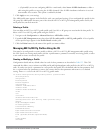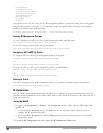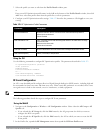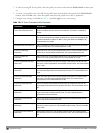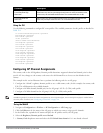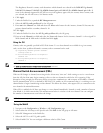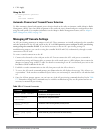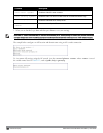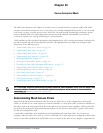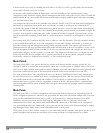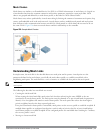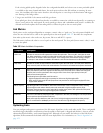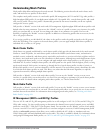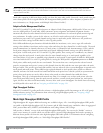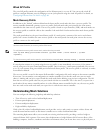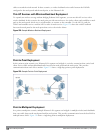
DellPowerConnectW-SeriesArubaOS6.2 | User Guide SecureEnterpriseMesh | 439
Chapter 24
Secure Enterprise Mesh
The Dell secure enterprise mesh solution is an effective way to expand network coverage for outdoor and indoor
enterprise environments without any wires. Using mesh, you can bridge multiple Ethernet LANs or you can extend
your wireless coverage. As traffic traverses across mesh APs, the mesh network automatically reconfigures around
broken or blocked paths. This self-healing feature provides increased reliability and redundancy: the network
continues to operate if an AP stops functioning or a connection fails.
Dell controllers provide centralized configuration and management for APs in a mesh environment; local mesh APs
provide encryption and traffic forwarding for mesh links. This chapterdescribes the Dell secure enterprise mesh
architecture, in the following topics:
l "Understanding Mesh Access Points" on page 439
l "Understanding Mesh Links" on page 441
l "Understanding Mesh Profiles " on page 443
l "Understanding Mesh Solutions " on page 445
l "Planning Deployment" on page 794
l "Working with Mesh Radio Profiles" on page 450
l "Working with Mesh High Throughput SSID Profiles " on page 455
l "Understanding Mesh Cluster Profiles" on page 459
l "Configuring Ethernet Ports for Mesh" on page 464
l "Provisioning Mesh Nodes" on page 467
l "Understanding the AP Boot Sequence " on page 469
l "Verifying the Network" on page 470
l "Configuring Remote Mesh Portals (RMPs)" on page 471
NOTE: Dell strongly recommends staging mesh APs before you deploy them. Identify the physical location of the APs, configure them
for mesh, provision the APs and verify connectivity before physically deploying them in a live network. For other pre-installation
considerations, see "Planning Deployment" on page 794.
Understanding Mesh Access Points
Mesh APs learn about their environment when they boot up. Mesh APs are either configured as a mesh portal
(MPP), an AP that uses its wired interface to reach the controller, or a mesh point (MP), an AP that establishes an
all-wireless path to the mesh portal. Mesh APs locate and associate with their nearest neighbor, which provides the
best path to the mesh portal. Mesh portals and mesh points are also known as mesh nodes, a generic term used to
describe APs configured for mesh.
A mesh radio’s bandwidth can be shared between mesh-backhaul traffic and client traffic. You can, however,
configure a radio for mesh services only. If you have a dual-radio AP, a mesh node can be configured to deliver client
services on one radio and both mesh and WLAN services to clients on the other. If you configure a single-radio AP



